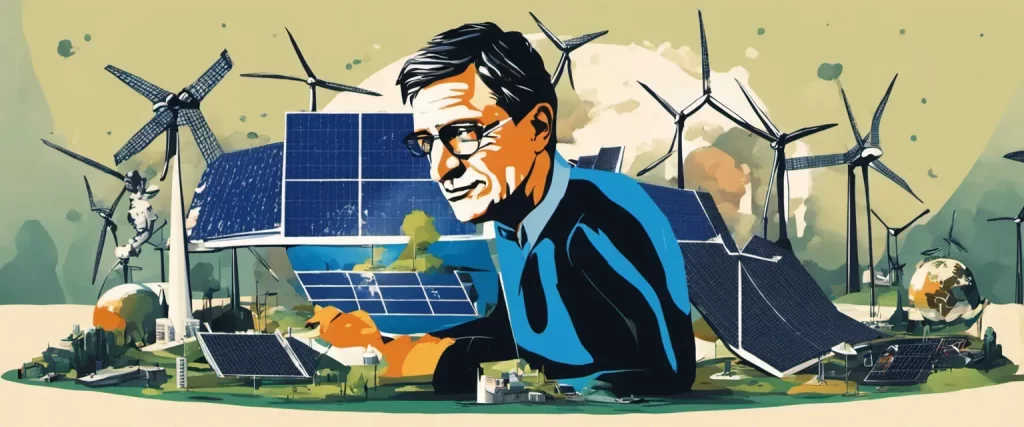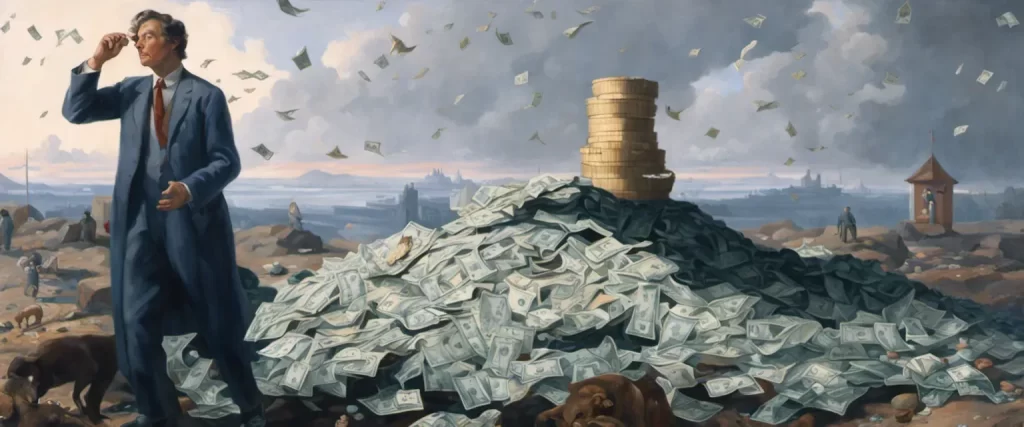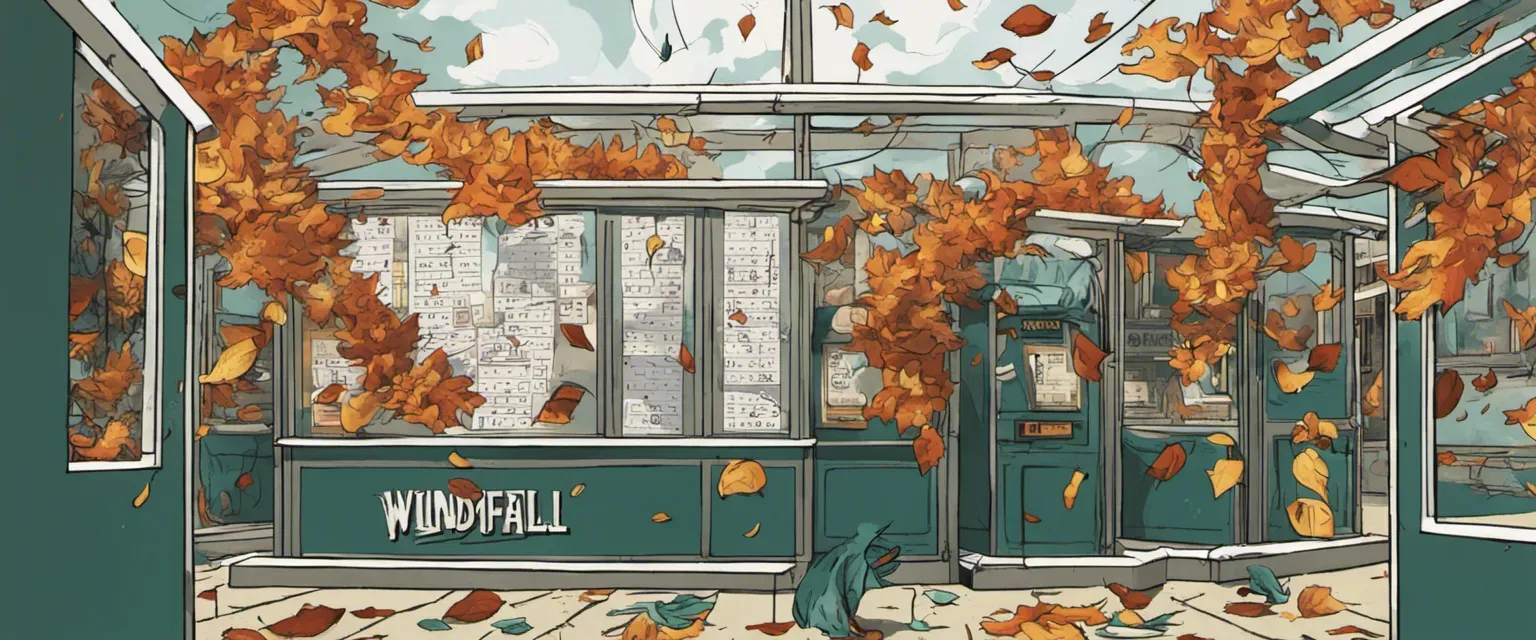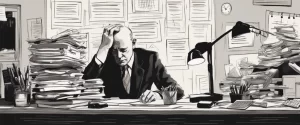——Windfall by McKenzie Funk & How to Avoid a Climate Disaster by Bill Gates
In an era where climate change has become an undeniable reality, the urgency to analyze and understand its impact on our planet has never been more crucial. As society grapples with the consequences of human-induced global warming, McKenzie Funk’s “Windfall” and Bill Gates’ “How to Avoid a Climate Disaster” offer distinct perspectives on this pressing issue. Both books delve into the intricacies of climate change but approach the topic from vastly different angles, resulting in illuminating insights and thought-provoking comparisons.
McKenzie Funk, an acclaimed journalist and author, takes us on a riveting journey in “Windfall” as he examines the booming industries emerging amidst climate change. Whether it be the lucrative business of melting Arctic ice or the exploitation of catastrophe-riddled regions, Funk uncovers the unanticipated beneficiaries of our planet’s warming. Through a series of captivating narratives and meticulous research, he exposes the economic motives and ethical dilemmas found within the climate change industry. Funk’s work sheds light on the unexpected consequences and potential moral quandaries that arise as our world confronts an increasingly uncertain future.
On the other hand, we have “How to Avoid a Climate Disaster” by Bill Gates, one of the world’s most renowned entrepreneurs and philanthropists. Drawing upon his expertise and extensive research, Gates offers a pragmatic framework for combating climate change in his book. He presents a comprehensive analysis of the various sectors contributing to carbon emissions and proposes a series of viable solutions. Gates’ approach is rooted in technology and innovation, advocating for the development and deployment of transformative breakthroughs to avert the impending catastrophe. With his unique perspective, Gates offers readers a roadmap to a sustainable future, emphasizing the need for collective action and political will to address this global crisis.
While both “Windfall” and “How to Avoid a Climate Disaster” share a common objective of unraveling the complexities surrounding climate change, they diverge in their exploration of the topic. Funk’s investigative lens spotlights the unforeseen ramifications and human stories behind this environmental crisis. In contrast, Gates’ analytical approach provides readers with pragmatic solutions and a blueprint for a greener world. By juxtaposing these two books, we gain a broader understanding of the multifaceted nature of climate change and the diverse perspectives needed to tackle it effectively.
As we embark on this comparative study, we will delve deep into the narratives, arguments, and strategies put forth by Funk and Gates. Through detailed analysis and critical evaluation, we will uncover the strengths and weaknesses of each book, drawing connections and highlighting distinctions along the way. By exploring the intersecting themes and diverging approaches of “Windfall” and “How to Avoid a Climate Disaster,” we aim to foster a more nuanced understanding of an issue that will undoubtedly shape our future.
Brief Summary of Two Books
Windfall by McKenzie Funk
Windfall” by McKenzie Funk is a non-fiction book that explores the world of climate change and the emerging market of profiting from it. Through various stories and interviews, Funk sheds light on how individuals and corporations are finding opportunities amidst the environmental crisis. He discusses the booming industries of green technology, carbon credits, and disaster capitalism, highlighting the winners and losers in our warming world. Ultimately, “Windfall” challenges readers to consider the ethical implications of profiting from the planet’s misfortune and offers insights into the complex relationship between climate change and the global economy.

How to Avoid a Climate Disaster by Bill Gates
How to Avoid a Climate Disaster” by Bill Gates is a comprehensive and urgent call to action for individuals, businesses, and policymakers to combat climate change. Gates presents a reasoned and compelling argument for the need to reduce greenhouse gas emissions to zero, providing a roadmap to achieve this ambitious goal. The book covers various sectors contributing to emissions, including electricity, transportation, manufacturing, and agriculture, while offering practical solutions and highlighting promising innovations. With clarity and insight, Gates emphasizes the importance of a collective effort to address climate change, stressing the significance of understanding the problem, setting bold targets, investing in research and development, and adopting policies that promote clean technologies. Overall, this book offers a scientifically grounded and practical guide to averting a climate disaster.
Comparison between Two Books
Similarities in Climate
Both “Windfall” by McKenzie Funk and “How to Avoid a Climate Disaster” by Bill Gates discuss climate change as a central theme and highlight the urgent need for action. Despite their different approaches and perspectives, these two books share several similarities when it comes to their depiction of the climate crisis:
1. Emphasis on the urgency: Both authors underscore the pressing need to address the climate crisis promptly. They argue that the consequences of inaction will be severe, both economically and in terms of human suffering. Funk and Gates stress that the window of opportunity for effective action is closing rapidly.
2. Global perspective: Both books take a global view of the climate crisis. They examine the impact on various regions, industries, and communities worldwide. Funk and Gates explore how different countries and stakeholders, such as governments, corporations, and individuals, contribute to and can mitigate the effects of climate change.
3. Economic implications: Both authors highlight the economic ramifications of the climate crisis. Funk’s “Windfall” investigates the financial aspects of adaptation and climate resilience, focusing on industries that exploit climate change for profit. Gates, in “How to Avoid a Climate Disaster,” delves into the economic opportunities created by transitioning to sustainable energy and other climate-friendly solutions.
4. Emphasis on innovation and technology: Funk and Gates underline the significance of technological innovation in addressing the climate crisis. They discuss various strategies and technologies that can help mitigate climate change and transition to a sustainable future. While Funk scrutinizes the technology industries that profit from the crisis, Gates proposes his own roadmap for reducing carbon emissions through technological advancements.
5. Human impact: Both books recognize the human cost of climate change. Funk explores the stories of communities affected by climate variations and the injustices faced by vulnerable populations. Gates emphasizes the importance of considering the needs and concerns of marginalized communities as part of the climate change solution.
6. Calls to action: Funk and Gates inspire readers to take action against climate change. While Funk focuses on exposing the exploitative nature of profit-driven industries, Gates presents practical solutions, outlining the necessary steps to reduce carbon emissions and attain a sustainable future.
In summary, both “Windfall” by McKenzie Funk and “How to Avoid a Climate Disaster” by Bill Gates share similarities in their discussions of the urgency of climate action, global perspectives on the issue, economic implications, the role of innovation and technology, recognition of human impact, and the call for proactive engagement.
Divergences in Climate
Windfall by McKenzie Funk and How to Avoid a Climate Disaster by Bill Gates are two books that explore the complex issue of climate change, but they approach it from different angles and offer distinct perspectives. While both books shed light on our current climate crisis, they diverge in terms of their focus, solutions proposed, and overall message.
1. Focus:
– Windfall: McKenzie Funk’s Windfall focuses on the impact of climate change on various aspects of the global economy. He investigates how countries, corporations, and individuals are adapting and capitalizing on these changes. Funk delves into the emerging “climate capitalism” and describes how people are making fortunes from disasters such as droughts, floods, and melting ice.
– How to Avoid a Climate Disaster: Bill Gates’ book, on the other hand, primarily focuses on providing practical solutions to prevent and mitigate climate change. Gates emphasizes the need for drastically reducing greenhouse gas emissions and provides a comprehensive roadmap for achieving a carbon-free future. His book focuses on technology, innovation, and policy changes as the key means to avert a climate disaster.
2. Solutions proposed:
– Windfall: While Windfall does mention some solutions throughout the book, it primarily highlights how individuals and corporations are profiting from climate change. Funk explores the instances where capitalism has taken advantage of climate destruction to make financial gains, rather than offering overarching solutions to address the crisis.
– How to Avoid a Climate Disaster: In contrast, Bill Gates’ book offers a detailed and target-oriented plan for combating climate change. Gates outlines specific areas such as electricity generation, manufacturing, transportation, and agriculture that need urgent attention. He emphasizes the critical role of innovation in creating new technologies and lays out a roadmap for reducing carbon emissions to zero.

3. Overall message:
– Windfall: The overarching message of Windfall is that climate change is creating winners and losers in the economy, potentially exacerbating inequalities between nations. Funk paints a vivid picture of a future where those who adapt and capitalize on climate change will thrive while others face the devastating consequences.
– How to Avoid a Climate Disaster: Bill Gates’ book focuses on the urgent need for action and emphasizes that everyone must work collectively to address climate change. Gates believes that the scale of the problem requires immediate and massive efforts, but with the right approach, humankind can avoid a climate disaster.
In summary, Windfall by McKenzie Funk primarily explores the economic and financial aspects of climate change, while How to Avoid a Climate Disaster by Bill Gates lays out a visionary and practical plan for combating climate change. The former focuses on the potential opportunities arising from climate change, while the latter emphasizes the need for immediate action and innovation to avoid catastrophic consequences.
Conclusion
Both “Windfall” by McKenzie Funk and “How to Avoid a Climate Disaster” by Bill Gates are highly recommended books on the topic of climate change. However, the worthiness of reading each book may vary depending on your personal interests and goals. Let’s discuss the key aspects of each book to help you determine which one may be more suitable for you:
1. “Windfall” by McKenzie Funk:
– Focus: This book explores the intersection of climate change and the potential opportunities for profit and power that arise from it. It delves into the concept of climate capitalism and examines how individuals, corporations, and governments are finding ways to exploit climate change.
– Highlights: Funk investigates specific cases, such as wealthy entrepreneurs who profit from selling luxury doomsday bunkers or small islands that turn themselves into tax havens for wealthy climate migrants.
– Appeal: If you are interested in understanding the economic, political, and social implications of climate change and how various actors are navigating these challenges, “Windfall” may be a fascinating read.
2. “How to Avoid a Climate Disaster” by Bill Gates:
– Focus: Bill Gates, co-founder of Microsoft and philanthropist, provides an in-depth analysis of the causes and consequences of climate change while proposing technological solutions to mitigate the crisis. He outlines a comprehensive plan and shares his vision for a sustainable future.
– Highlights: Gates draws on his knowledge and experience in technology and innovation, presenting a detailed roadmap that covers areas like electricity generation, transportation, manufacturing, agriculture, and more. He addresses the urgent need for clean energy and highlights breakthrough technologies that could reduce greenhouse gas emissions.
– Appeal: If you are interested in understanding the specific strategies, innovative solutions, and technologies that can help combat climate change, “How to Avoid a Climate Disaster” provides a well-researched and solution-oriented approach.
Ultimately, the choice between these two books depends on your preferences. If you are more interested in the economic and political aspects and want to explore the consequences and responses to climate change from a profit-driven perspective, “Windfall” would be a suitable choice. On the other hand, if you are more fascinated by technological solutions and want to gain insights into actionable steps to address climate change at a global scale, “How to Avoid a Climate Disaster” by Bill Gates would be the more relevant option.




Pingback: From the Past to the Present: Delving into Human History through Yuval Noah Harari's Books - OneBookReads
Pingback: A Parallel Journey through Human History: Comparing Two Books - OneBookReads
Pingback: Management Mavericks: Contrasting Approaches in 'Let My People Go Surfing' and 'Start-Up Nation' - OneBookReads
Pingback: The Lucifer Effect vs The Death of Expertise: A Social Psychology Analysis - OneBookReads
Pingback: The Dynamics of Politics and Global Landscape: Analyzing World Order and Why the West Rules—for Now - OneBookReads
Pingback: Diet & Lifestyle: A Comparative Study of Alchemy of Herbs and Diet for a New America - OneBookReads
Pingback: Economics Unleashed: A Comparative Exploration of Mastering the Market Cycle and SuperFreakonomics - OneBookReads
Pingback: Harnessing the Power of Positive Thinking: Exploring The Book of Hope and Being Mortal - OneBookReads
Pingback: Navigating the Intersection of Economics and Survival in The Undercover Economist and The Long Emergency - OneBookReads